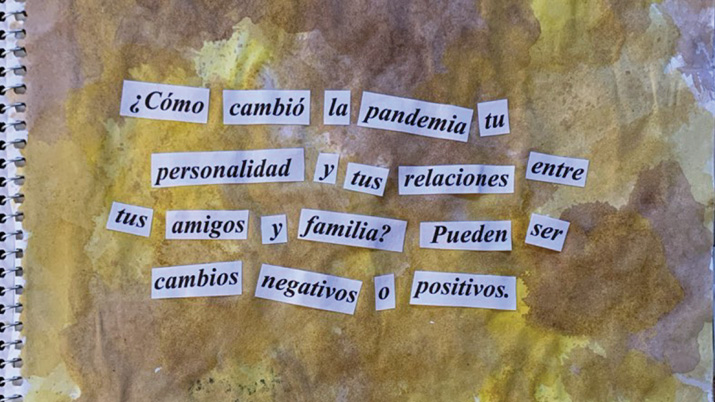Dr. Arianna Dagnino, certified translator and Sessional Lecturer of Italian Studies, talks about the beauty and challenges of translation work along with practical advice for those seeking to pursue a career in translation.
Translation as a Bridge Between Cultures and Eras


“Moving across languages is moving across different cultures, different ways of looking at the world, different sensibilities, different literary realms—it is a multiplication of perspectives, a cultural enrichment.”
I was drawn to the field of translation by the transcultural perspective inherent in any translation process. When dealing with literary translation, merely conveying meaning from one language to another is not enough. In order to transpose the emotional and cultural content of a literary work (feelings, cultural nuances, humour, tone, register, colloquialisms, metalanguage, etc.) in another language, we need to go beyond lexis and syntax. That is what fascinates me about translation. Moving across languages is moving across different cultures, different ways of looking at the world, different sensibilities, different literary realms—it is a multiplication of perspectives, a cultural enrichment.
One crucial element to consider is that languages never remain static. Thus, literary translations tend to become obsolete after a few decades. The half-life of a translated work ranges from 30 to 40 years; after that, the translation starts losing its vitality, its freshness, and its ability to communicate to the reader in a contemporary voice. It follows that major works of literature must be translated periodically if they are to retain their function as a bridge between cultures and eras. This allows every generation the opportunity to discover its own voice in a new translation.
In that regard, I take issue with the idea of censoring texts that nowadays might be perceived as highly controversial in their depictions of gender roles, racial attitudes, political views, violence, abuse, or social discrimination. What we can certainly do as translators, scholars, and literary critics is provide enough historical contextualization to make sure students and readers at large understand how a literary text is—or was—“situated” in the broader context (Edward Said) and what it teaches us about the views some people (if not the majority of people) might hold in a specific period and socio-political moment in time.
The Challenges of Translation
“Respect is paramount when representing other groups and cultures.”
The two main challenges of translating works are: 1) Re-creating in the ‘target language reader’ the same emotional and psychological effect that a ‘source language reader’ might experience; and 2) Reproducing in the ‘target text’ the cultural context and content embedded in the ‘source text’ in a smooth and natural way, thus allowing the reader to “absorb” specific elements of another culture almost subconsciously, without even realizing it. In other words, the challenge is to create in the readers the feeling and impression that they have been cognizant of specific cultural elements all along.
Respect is paramount when representing other groups and cultures. Within a more specific Canadian context, translations of works by Indigenous Peoples must take into account aspects of cultural reclamation; as such, collaborating with the Elders and native speakers of a specific linguistic community is of crucial importance and significance.
As a translator, you do your best to promote the translation of works that you find particularly relevant and worth discovering or re-discovering in other languages and cultural spheres. However, generally speaking, the translator has little control over how the national or international publishing market handles translation projects, from negotiations over the acquisition of translation rights to the launch of the translation.
Careers in Translation


“The international reputation of Canadian translation agencies is well known, and working as an intern or an independent contractor for one of them can be a worthwhile career path.”
Linguistic diversity is in the cultural DNA of Canada, and what makes this country such an interesting and successful experiment in multiculturalism—especially in our current times, when tribal and national divisions are on the rise. The international reputation of Canadian translation agencies is well known, and working as an intern or an independent contractor for one of them can be a worthwhile career path. Despite having only 0.5% of the world’s population, Canada accounts for a full 10% of the global translation market, which is valued at over $43 billion (USD).
As in most professions, one needs to go through a period of formal education and training both at the beginning of their career and throughout. It is also essential to obtain professional certification (for example, through the certification program offered by the Society of Translators and Interpreters of BC (STIBC). I would advise emerging translators to specialize in specific areas (such as law, medicine, finance, marketing, healthcare, corporate reports, subtitling, etc.) and become proficient in technical translation.
Unfortunately, literary translation in itself does not pay very well and should be considered more of a hobby. Only a few translators can fully break through and make a living out of it, as Anne Goldstein managed to do. An accomplished translator in the Italian-English language combination, Goldstein is best known for her translations of Elena Ferrante‘s Neapolitan Quartet and the works of other internationally renown Italian writers such as Primo Levi and Pier Paolo Pasolini.
The rarer and less widely known the language you are translating from is, the better chances you will have of finding good and well-paid work opportunities as a translator or interpreter.
The work of a translator is mostly a solitary venture, even though at times there can be opportunities to work collaboratively for major translation projects that may last several months. Whether you work as a freelancer or you are employed by a translation agency or any other private, non-profit or government institution needing translation services, you will be spending many hours sitting alone in front of a computer screen. However, the beauty of this job is that you can work wherever you are and according to your own time schedule—obviously, always having in mind that there are still deadlines to meet.
Favourite Project
“Translation may become a powerful means of 'estrangement'—a way to see familiar things in a different light or through a different voice, thus renewing and transforming one’s artistic perception.”
The self-translation of my novel The Afrikaner (Guernica Editions, Toronto, 2019), from Italian into English, has been so far the most intriguing translation project because this is how I discovered first-hand how one can use literary translation as a form of creative writing. While translating my own work, I realized I was also re-envisioning it, and thus took the liberty of re-writing many passages and dialogues. If approached this way, translation may become a powerful means of “estrangement” (what the 20th century Russian formalist literary critic Viktor Shklovsky would call ostranienje), that is a way to see familiar things in a different light or through a different voice, thus renewing and transforming one’s artistic perception. This also happened to me with the self-translation of my collection of poems Seaborn Eyes (Ekstasis, Victoria, 2021).
________
Dr. Arianna Dagnino is a writer, literary translator, and academic researcher. She currently teaches in the Italian Studies program at the University of British Columbia in Vancouver. She self-translated from Italian into English her post-apartheid novel The Afrikaner (Guernica Editions, Toronto), the creative nonfiction The Istanbul Quintet (Il Quintetto d’Istanbul, Ensemble, Rome), and the collection of poetry Seaborn Eyes (Ekstasis, Victoria). She is a STIBC certified translator (Fr/En>It). Visit her website at www.ariannadagnino.com.


